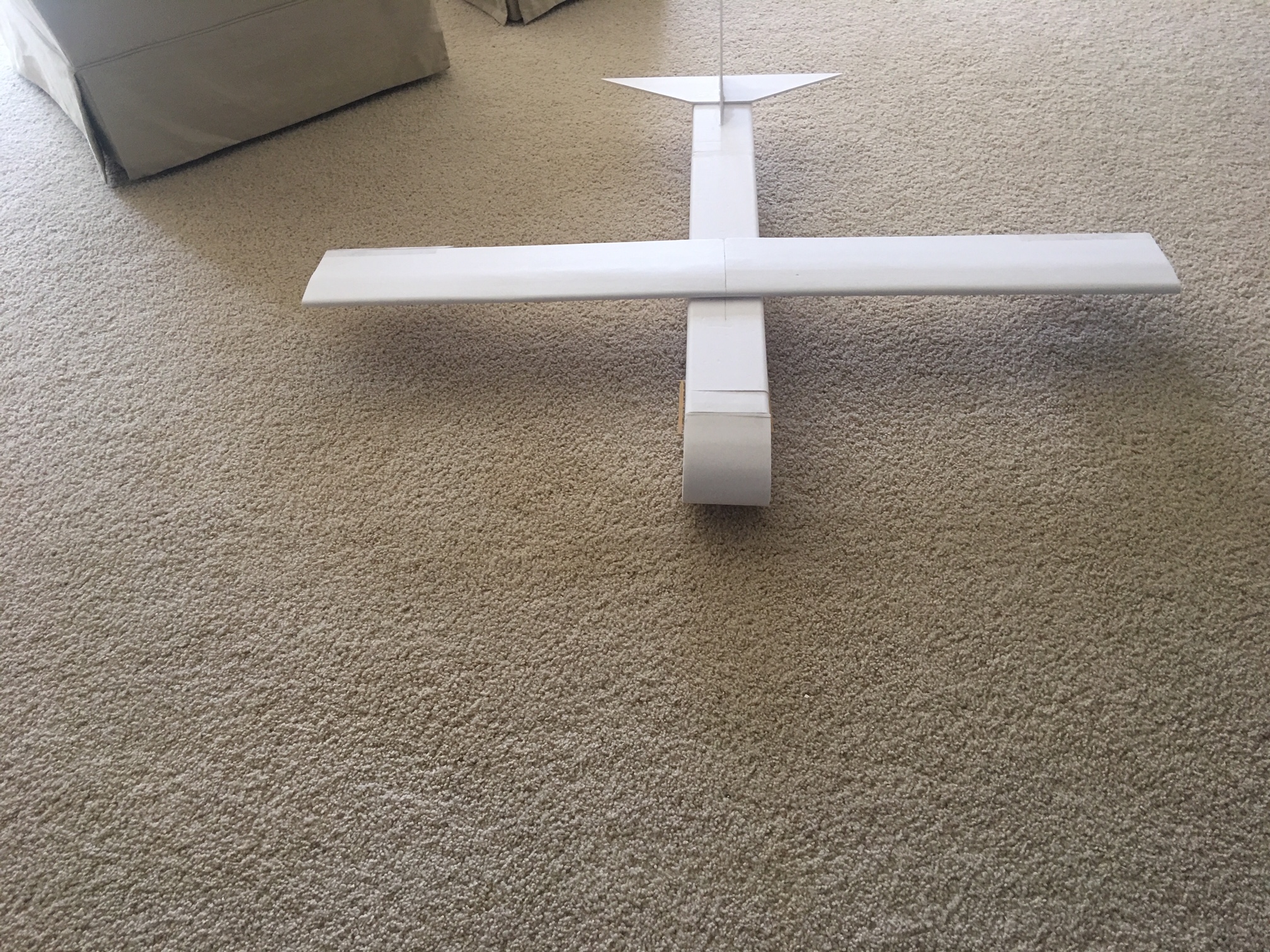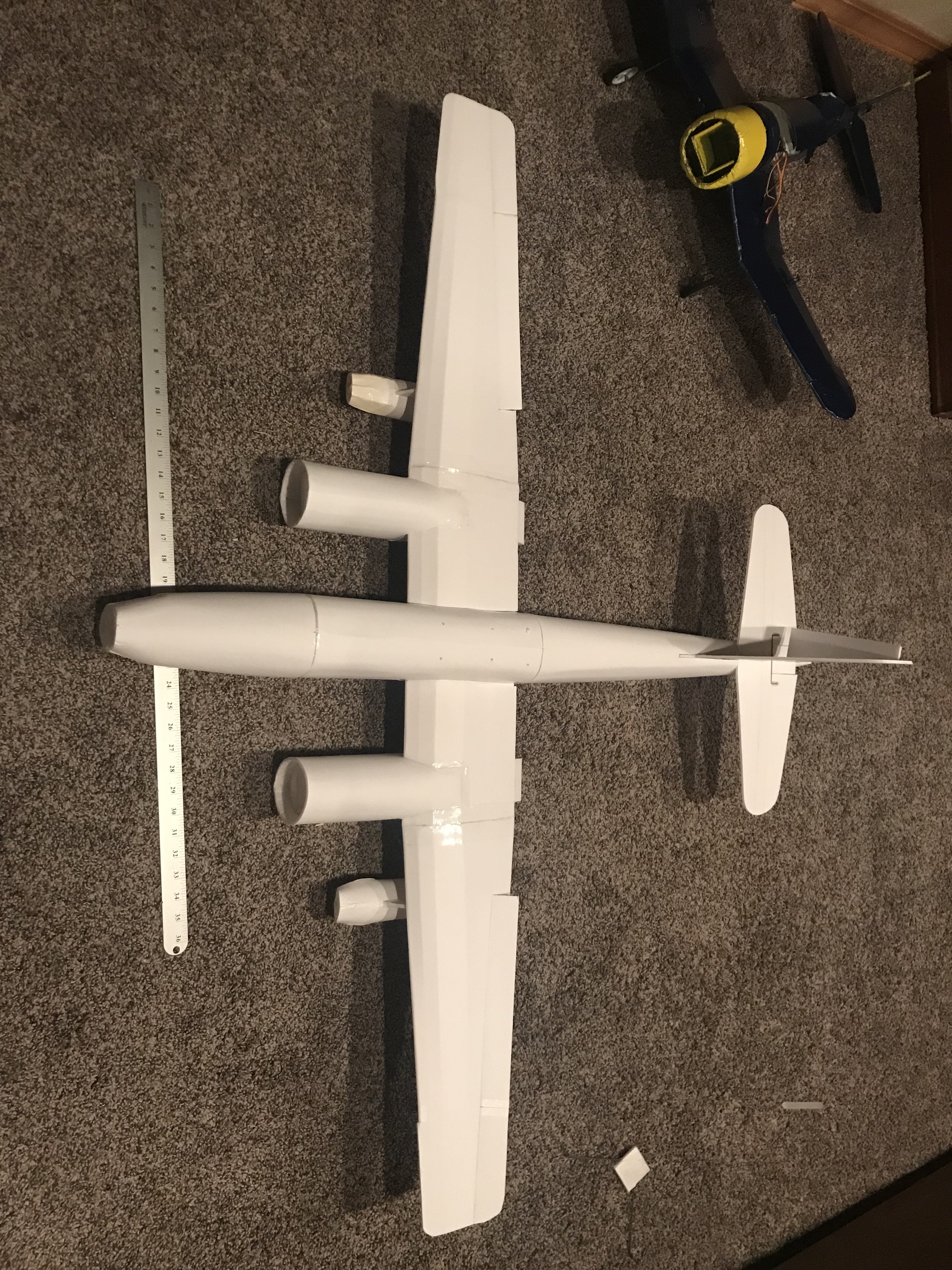Wow that was a ton of information! i really appreciate this as i am not a beginner in RC planes but am a beginner in scratch building. So what your saying is that the motors are fun but i should switch propellers? I didn't know there were different types of propellers and i also didn't know that they made a difference. Do you know someone who has a good definition of the different types of propellers and there different performances? So would something like this work for the prop? Which do you think would work better?
https://www.motionrc.com/products/apc-7x5-thin-electric-propeller-black
or
https://www.motionrc.com/products/apc-7x5-slow-flyer-electric-propeller
Would you run this on something like a 3200 3s, a 2200 3s, or a 3000 4s?
So for the wing could i do something like this just with a 12 inch chord? Would that work with the fuselage i built (It seems like a huge wing)? So are you saying i should keep a 60inch wingspan but increase chord to 12 inches? Would this work? (just with thicker chord) .
Do you think the rudder/elevator i have on the fuselage would work? You don't know how much i appreciate this your help, thank you so much!
Well, that all depends. I would expect similar results if you go with those APC 7x5's on 4s as i would the XOAR 10x5 on 3s, which is to say between all your props, you should be at around 6.5lbs of thrust, full power (note, the testing took place at around 4500 feet, so you may wind up with more thrust, power draw). so keep it under...oh 12,13lbs, you should be good.
Yes, there are different propellers and different motors for different jobs. KV is a critical factor, as is size. KV is basically how many RPMs the motor will spin max with no load. The lower the KV, the higher the torque tends to be. Ex, those huge pancake motors they use on high lift quads tend do be super low KV, like 270. This means you can spin a massive propeller, but not very fast, or with a LOT of extra voltage. On the other side of this, you have racing quad motors, like the 2204/6/8 2300kv motors that spin a tiny prop but generate a very good amount of thrust at REALLY FAST SPEEDS. Now if you remember your physics class (i think) the formula for kinetic energy is 2*m*v^2. This is important because your propeller/motor is a way of moving air around. So its easier to move a large mass of air slowly than it is a smaller mass of air quickly. Its also easier to move a larger propeller through the air at a slower RPM than it is to move a smaller propeller through the air at insane speeds.
When you're picking stuff out like propellers and powerplants, you need to have a few things in mind in terms of your end goal, specifically:
1. How big is this thing going to be/ how much is it going to weigh
2. How do i want it to fly?
If you are going light and fast, for example like a pylon racer or you are trying to go over 100mph on a punjet, a racing quad outrunner or a high RPM inrunner is a good choice, because you get high RPMs and enough torque for your thrust. In your case, you are going average to slow speeds, probably in the mid 30s, and you want payload, so you want a motor that can at least hit a static pitch speed (how fast the air is leaving the prop) in your 40mph range, if not a bit more for cruise. I like to go for the kind of powerplants the RMRC anaconda uses, 5050 or so at 500kv or so, and a pretty pitchy 14" prop. This means takeoffs are inefficient, but i can hit a pretty good cruise with low amp draw because i don't necessarily have to keep my propeller spinning fast to keep it pushing air faster than the plane.
On your battery, here's how it works. Figure out how much amperage you are using at full power, in your case its like 80-90 amps. Now on your battery there should be an average C rating (dont go with the max C rating), and multiply this by the capacity of the battery. So a battery with 20c and 4a capacity is capable of safely discharging 80a constantly. If your battery is capable of an 80-90a discharge by that calculation, you should be fine.
Next off, the airfoil. The big question you wanna ask is, again "what do i wanna do with this plane?" If your answer is to go fast, you want a thinner, sleeker airfoil that is just barely bigger than the carbon fiber you're using for the spars, and you want a symmetric foil (same on top and bottom), which tends to be better for not creating lift-based drag and for flying inverted. In your case, you're looking for lift, so an airfoil with a higher thickness to chord and a flat bottom, like the armin or a clark Y, are great choices. Thicker airfoils have two advantages, they allow you to use a lighter spar, because you are putting the forces on your spar (tension and compression) farther from the center of the spar. The b-36 is a great example of this. It uses a 20% thickness NACA 63-420 airfoil, meaning the thickest part of the airfoil is 20% of the length of the airfoil. This makes the wing about half as thick as the body in places, but allows for an airfoil thats very clean, provides a LOT of lift, and plenty of area for the wing spars to support the wing, which is why you could see a plane with a wing 30 feet longer than a 747 being flown 20 years prior. In your case, the armin wing should be fine, though i might suggest gluing some wooden rods to the top/bottom of the foam spar to add some strength, or just use a home depot ruler.
So TL;DR, and to actually answer your question: Yes, a 12" chord, 60" wing should be good, you could almost go 14" if you want. Your motors should be plenty punchy for that if your all up weight is less than 12lbs. Multiply the C rating of your battery by the number of amps it holds, if it goes up to 90 in your case, you should be good.
On your rudder/elevator situation, the point is to give you authority on your pitch/yaw (up/down, left/right) axes. These need to be larger to be able to keep up with your aircraft at lower speeds where your control surfaces have less authority. So my thought would be go larger on both, and you can always downsize later if you feel like they are too big/too draggy. But look at the Guinea Pig, it has a triple rudder setup and a pretty sizeable elevator. Given what your plane is doing, i would look at that for inspiration.
Oh, and for those videos...
they're from the same guy on the same airfoil, one is just a little more complete (The colored wing one) so watch both if you like, i would recommend the one with the colored tape, because i like colored tape.
 The second and third pictures include the electronics
The second and third pictures include the electronics

 The fourth picture is just the wing and fuselage.
The fourth picture is just the wing and fuselage.










